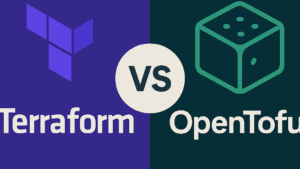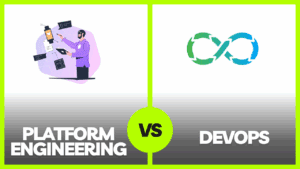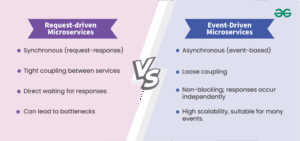In today’s rapidly evolving technological landscape, businesses are increasingly embracing the concept of Infrastructure as Code (IaC) to streamline their operations and achieve greater efficiency. One platform that has gained significant traction in this field is Google Cloud Platform (GCP), offering a robust set of tools and services tailored specifically for IaC. By leveraging GCP for Infrastructure as Code, organizations can benefit from automated infrastructure provisioning, improved scalability, enhanced security, and simplified management. At SlickFinch, we are well-versed in the intricacies of GCP and its advantages for IaC implementation. Whether you need assistance with setting up your infrastructure or optimizing your existing processes, we are here to offer our expertise and help you harness the full potential of GCP.

Introduction
In today’s fast-paced digital world, the need for efficient and scalable infrastructure management has become paramount for businesses. This is where Infrastructure as Code (IaC) comes into play. IaC is a methodology that allows organizations to manage and provision their infrastructure through code, enabling automation, reproducibility, and scalability. In this article, we will explore the concept of Infrastructure as Code and its relevance in the realm of cloud computing. We will also delve into Google Cloud Platform (GCP), one of the leading cloud service providers, and discuss how IaC can be implemented effectively on GCP.
Overview of Infrastructure as Code (IaC)
Definition of Infrastructure as Code
Infrastructure as Code refers to the practice of managing and provisioning infrastructure resources using machine-readable, declarative configuration files or scripts. In simpler terms, it allows organizations to define their infrastructure needs, such as virtual machines, networks, storage, and security settings, through code. This code can be version-controlled, tested, and deployed programmatically, ensuring consistency and reducing the chances of manual errors.
Benefits of Infrastructure as Code
Implementing Infrastructure as Code offers numerous benefits for organizations. Firstly, it allows for the automation of infrastructure provisioning, reducing the time and effort required for manual deployment. This automation also enhances efficiency and reduces the risk of human errors. Additionally, IaC enables scalability, as infrastructure resources can be easily replicated and scaled up or down based on demand. Furthermore, Infrastructure as Code promotes reproducibility, ensuring that the same infrastructure can be easily recreated in different environments. It also facilitates collaboration among teams, as code can be version-controlled and shared for seamless cooperation.
Relevance of IaC in Cloud Computing
With the rise in popularity of cloud computing, the need for efficient infrastructure management has become even more crucial. Cloud platforms offer on-demand access to a wide array of infrastructure resources, making them an ideal choice for many organizations. However, managing these resources manually can be time-consuming and error-prone. This is where Infrastructure as Code comes in. By defining and provisioning cloud infrastructure resources through code, organizations can leverage the advantages of cloud computing while maintaining control, scalability, and automation. This makes IaC an essential component of cloud infrastructure management.
Introduction to Google Cloud Platform (GCP)
Overview of GCP
Google Cloud Platform (GCP) is a suite of cloud computing services offered by Google. It provides a wide range of infrastructure resources, including virtual machines, storage, databases, networking, and more. GCP is known for its scalability, reliability, and performance, making it a popular choice for organizations of all sizes. With a vast global network of data centers and a comprehensive set of tools and services, GCP empowers businesses to build, deploy, and scale their applications with ease.
Key Features of GCP
GCP offers several key features that make it a compelling choice for infrastructure as code. Firstly, it provides a reliable and highly available infrastructure, ensuring that applications deployed on GCP are accessible and performant. The platform also offers flexible pricing options, allowing organizations to optimize their costs based on their specific needs. GCP is known for its security measures, ensuring the confidentiality and integrity of data stored and processed on the platform. Furthermore, GCP provides a range of developer-friendly tools and services, facilitating seamless integration and automation. These features make GCP a robust platform for implementing Infrastructure as Code.

Understanding Infrastructure as Code in GCP
What is Infrastructure as Code in GCP?
Infrastructure as Code in the context of Google Cloud Platform refers to the practice of managing and provisioning GCP resources through code. This includes defining virtual machines, networks, disk storage, load balancers, and other infrastructure components using configuration files or scripts. By adopting Infrastructure as Code in GCP, organizations can automate the deployment and management of their infrastructure, enabling faster delivery of applications and reducing operational overhead.
Advantages of using Infrastructure as Code in GCP
Utilizing Infrastructure as Code in GCP offers several advantages. Firstly, it allows for rapid infrastructure provisioning, reducing the time required to set up resources manually. This agility is particularly beneficial when launching new applications or scaling existing ones. Additionally, Infrastructure as Code in GCP enables consistent and reproducible deployments. The configuration code can be version-controlled, ensuring that the infrastructure can be easily replicated or rolled back if needed. Furthermore, Infrastructure as Code enhances collaboration among teams, as the code can be shared, reviewed, and modified in a controlled manner. This promotes knowledge sharing and streamlines the development process. Lastly, Infrastructure as Code helps organizations optimize their costs by enabling resource utilization monitoring and efficient scaling based on demand.
Benefits of Using GCP for Infrastructure as Code
Scalability and Flexibility
One of the primary benefits of using GCP for Infrastructure as Code is the scalability and flexibility it offers. GCP provides a vast pool of infrastructure resources that can be easily scaled up or down based on demand. With the ability to provision resources programmatically, organizations can quickly adapt to changing workloads and ensure optimal performance for their applications. The flexibility of GCP also extends to the availability of various compute, storage, and networking options, allowing organizations to choose the best-fit resources for their specific requirements.
Automation and Efficiency
Automation is a key element of Infrastructure as Code, and GCP provides several tools and services to support automation efforts. By leveraging tools like Google Cloud Deployment Manager, Terraform, and CloudFormation, organizations can define their infrastructure requirements as code and automate the provisioning process. This eliminates the need for manual intervention, reduces human errors, and enables faster deployment and scaling of applications. Automation also improves operational efficiency, as tasks that were once performed manually can now be executed automatically, freeing up valuable time for teams to focus on more strategic initiatives.
Reproducibility and Consistency
Maintaining consistency and reproducibility in infrastructure deployments is crucial for organizations. GCP’s Infrastructure as Code capabilities ensure that infrastructure configurations can be easily version-controlled and replicated across multiple environments. This allows organizations to achieve consistent deployments, ensuring that applications work reliably in any environment. If issues arise, the ability to rollback or recreate the infrastructure from a previous configuration ensures that troubleshooting and testing can be performed with ease.
Cost Optimization
Optimizing costs is a top priority for organizations, and GCP provides various features and tools to help achieve this goal. Infrastructure as Code enables organizations to manage and monitor resource utilization effectively. By provisioning infrastructure based on actual demand, organizations can optimize costs and eliminate underutilized resources. Thanks to GCP’s flexible pricing options, organizations can choose the most cost-effective resource types and sizes that align with their specific workload requirements. This granular control over costs enables organizations to achieve significant savings without compromising performance.
Version Control and Collaboration
Working collaboratively on infrastructure configurations and ensuring version control is essential for efficient development and maintenance. GCP’s Infrastructure as Code capabilities support version control systems, enabling organizations to track changes made to the infrastructure configurations, review code, and roll back to previous versions if necessary. This promotes collaboration among teams, as multiple individuals can work concurrently on the same infrastructure codebase. With version control, organizations can also trace the history of infrastructure changes, making it easier to pinpoint and address any issues that may arise.
Security and Compliance
Security and compliance are critical aspects of infrastructure management. GCP provides robust security measures and compliance certifications, ensuring the protection and privacy of data. Implementing Infrastructure as Code in GCP allows organizations to define and enforce security best practices and compliance requirements directly in the infrastructure configuration code. This ensures that security measures, such as firewall rules and access controls, are consistently applied across all environments. With the ability to enforce security policies as code, organizations can mitigate the risk of misconfigurations and maintain a secure infrastructure.
GCP Tools and Services for Infrastructure as Code
Google Cloud Deployment Manager
Google Cloud Deployment Manager is a powerful tool provided by GCP for infrastructure orchestration and management. It allows organizations to define their infrastructure resources using declarative configuration files written in YAML or Python. With Deployment Manager, organizations can create, update, and delete resources in a controlled and consistent manner. The use of templates makes it easy to manage complex infrastructure deployments, and the integration with version control systems enables collaboration and versioning of the infrastructure code.
Terraform with GCP
Terraform is a popular open-source infrastructure provisioning tool that supports GCP. It enables organizations to define their infrastructure as code using a declarative language called HashiCorp Configuration Language (HCL). With Terraform, organizations can create reusable infrastructure modules, manage dependencies between resources, and provision GCP resources efficiently. Terraform also provides a preview feature, allowing organizations to review the changes that will be made to the infrastructure before applying them, further enhancing control and reproducibility.
CloudFormation on GCP
CloudFormation is an infrastructure as code service provided by AWS, but it can also be used to manage infrastructure on GCP. CloudFormation allows organizations to define their infrastructure using JSON or YAML templates. Although primarily designed for AWS, CloudFormation also supports GCP resources through the use of custom resource providers. This enables organizations to leverage their existing CloudFormation templates and provisioning processes while benefiting from GCP’s infrastructure capabilities.
Configuring Infrastructure as Code on GCP using Deployment Manager
To configure infrastructure as code on GCP using Deployment Manager, organizations need to define their infrastructure resources in a Deployment Manager configuration file. This configuration file can be written in YAML or Python and includes details such as the desired GCP resources, their properties, and any dependencies between them. Once the configuration file is created, it can be deployed using the Deployment Manager API or the command-line interface. Deployment Manager then takes care of creating and managing the specified resources, ensuring that the infrastructure is provisioned according to the defined configuration.
Automating Infrastructure with Terraform and GCP
Automation is a crucial aspect of infrastructure management, and Terraform provides robust automation capabilities for managing GCP resources. Using Terraform with GCP involves writing Infrastructure as Code using the HCL language and defining the desired GCP resources, their properties, and any dependencies. Once the Terraform configuration is defined, organizations can use the Terraform CLI to create an execution plan, review the changes that will be applied, and apply the changes to provision or update the infrastructure resources. Terraform also supports the use of modules, enabling organizations to reuse and share infrastructure configurations across different projects or teams.
Using CloudFormation for Infrastructure Provisioning on GCP
Although CloudFormation is primarily designed for AWS, it can be extended to manage infrastructure on GCP as well. To use CloudFormation for infrastructure provisioning on GCP, organizations need to leverage custom resource providers. These providers act as bridges between CloudFormation and GCP resources, allowing organizations to define their GCP infrastructure using CloudFormation templates. This enables organizations to achieve consistent infrastructure management across multiple cloud platforms, leveraging their existing CloudFormation knowledge and processes.
Case Studies: Real-world Examples of using GCP for Infrastructure as Code
1:Migrating to GCP with Infrastructure as Code
Our client, a large multinational corporation, decided to migrate its infrastructure to GCP to leverage the scalability and flexibility offered by the cloud. To ensure a smooth transition, they adopted Infrastructure as Code practices using Google Cloud Deployment Manager. By defining their infrastructure requirements as code, they were able to automate the provisioning process, reducing the time and effort required. They also achieved consistent deployments across their environments, ensuring reproducibility and reliability. With the help of SlickFinch, experts in Infrastructure as Code on GCP, this client successfully migrated to GCP and now benefits from a scalable and efficient infrastructure.
2: Scaling Applications using Infrastructure as Code on GCP
Our client, a startup experiencing rapid growth, needed a scalable infrastructure to handle their increasing user base. They turned to GCP and implemented Infrastructure as Code using Terraform. With Terraform, this client defined their infrastructure requirements as code, enabling them to easily scale their application resources based on demand. Through the use of automation, they reduced the time and effort required for manual infrastructure provisioning, allowing their engineering team to focus on developing new features. The expertise of SlickFinch in Terraform and GCP proved invaluable to this client, ensuring a seamless transition and efficient scaling of their applications.
Best Practices for Implementing Infrastructure as Code on GCP
Planning and Designing Infrastructure
Before diving into implementing Infrastructure as Code on GCP, it is essential to plan and design the infrastructure carefully. This involves understanding the requirements of the application, identifying the necessary GCP resources, and determining the dependencies between them. By thoroughly analyzing the infrastructure needs upfront, organizations can avoid potential issues and ensure a scalable and efficient deployment.
Modularization and Reusability
To promote reusability and maintainability, it is recommended to modularize infrastructure configurations. This involves creating reusable code modules that can be easily shared across projects or teams. By separating infrastructure logic into smaller modules, organizations can reduce duplication, streamline development, and facilitate collaboration. Modularization also enables organizations to update and manage infrastructure components independently, speeding up the deployment and maintenance processes.
Testing and Validation
Just like with any other software development process, testing and validation are crucial for Infrastructure as Code on GCP. It is important to perform thorough testing of the defined infrastructure configurations to ensure their correctness and reliability. Automated testing frameworks, such as Terratest, can be utilized to validate the infrastructure code and simulate real-world scenarios. Testing helps identify any potential issues before deploying the infrastructure, reducing the risk of errors and ensuring smooth operations.
Continuous Integration and Delivery
Implementing a continuous integration and delivery (CI/CD) pipeline for Infrastructure as Code on GCP can greatly improve development efficiency. By integrating infrastructure code with version control systems and leveraging tools like Cloud Build or Jenkins, organizations can automate the process of building, testing, and deploying infrastructure changes. CI/CD pipelines allow for rapid iteration, faster feedback, and enhanced collaboration among teams. They also ensure that infrastructure changes are rolled out consistently and reliably.
Monitoring and Maintenance
Monitoring and maintenance are ongoing activities in any infrastructure management process. It is crucial to implement monitoring solutions that provide visibility into the health and performance of the infrastructure deployed on GCP. Tools like Google Cloud Monitoring and Stackdriver Logging can be used to monitor resource utilization, track system-level metrics, and generate alerts for potential issues. Regular maintenance tasks, such as updating infrastructure code and applying security patches, should also be performed to ensure the stability and security of the infrastructure.
Challenges and Considerations
Complexity and Learning Curve
Implementing Infrastructure as Code on GCP can be challenging, especially for organizations that are new to the concept. It requires a shift in mindset and the adoption of new tools and practices. The learning curve can be steep, requiring teams to invest time and effort into understanding the intricacies of GCP and the best practices for Infrastructure as Code. However, the expertise and guidance provided by SlickFinch can help organizations navigate these challenges smoothly and streamline the implementation process.
Governance and Compliance
Ensuring governance and compliance in infrastructure management is crucial for organizations, especially in highly regulated industries. When implementing Infrastructure as Code on GCP, organizations must adhere to relevant regulations and security standards. This includes defining and enforcing security policies, access controls, and data protection measures. With the help of SlickFinch, organizations can ensure that their Infrastructure as Code practices align with industry best practices and comply with regulatory requirements.
Vendor Lock-in
Vendor lock-in is a consideration that organizations should keep in mind when implementing Infrastructure as Code on GCP. While GCP provides a robust set of tools and services, the decision to adopt them should be made with care. Organizations should evaluate the portability of their Infrastructure as Code configurations and ensure that they can be easily migrated to other cloud platforms if needed. SlickFinch can assist organizations in assessing the compatibility and portability of their Infrastructure as Code implementations, offering guidance and strategies for minimizing vendor lock-in.
Managing State and Configuration
Managing the state and configuration of infrastructure resources can be challenging when utilizing Infrastructure as Code on GCP. Storing and syncing the state of resources across deployments is crucial for accurate management and tracking of infrastructure changes. Tools like Google Cloud Storage and HashiCorp Consul can be used to store and manage the state and configuration files securely. It is essential to establish clear procedures and guidelines for managing state and ensure that the infrastructure code remains in sync with the actual deployed resources.
About SlickFinch
SlickFinch is a leading provider of expertise and services in Infrastructure as Code on GCP. With a team of experienced professionals, SlickFinch helps organizations implement, optimize, and automate their infrastructure deployments on GCP. Whether it’s establishing a scalable infrastructure, ensuring compliance and security, or streamlining CI/CD processes, SlickFinch brings deep knowledge and best practices to every engagement. Contact SlickFinch today to discover how they can help you harness the power of GCP and Infrastructure as Code for your organization’s success.




